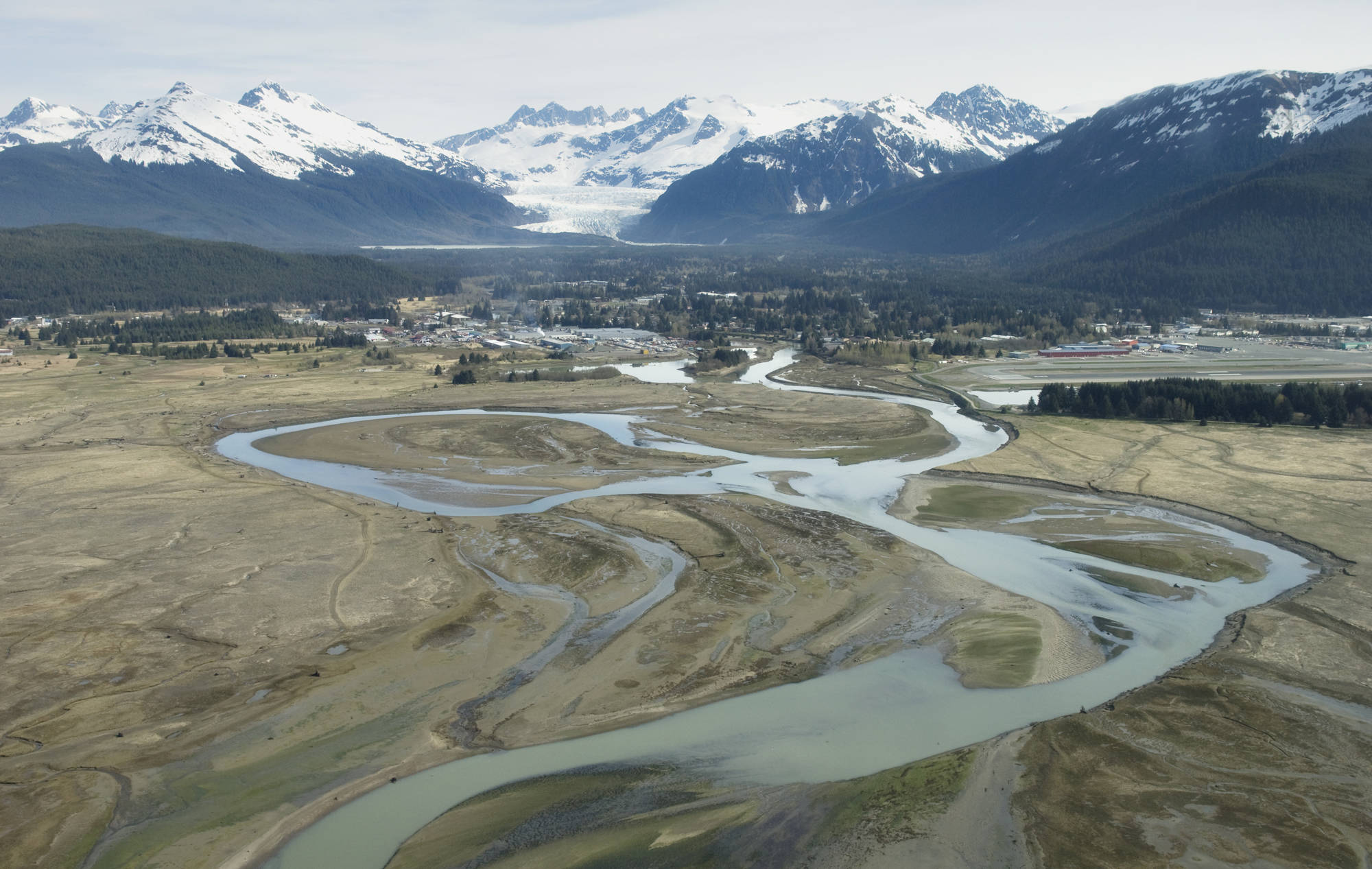Last month, erosion on the Mendenhall River led to a situation that has never happened in Juneau.
On Sept. 1, City and Borough of Juneau Engineering and Public Works Director Roger Healy examined a wastewater pipe that ran beneath the river to the Mendenhall Wastewater Treatment Plant and saw it was about to break. Relentless glacial floods, known as the jökulhlaup, have reformed the riverbed over the past five or six years and exposed the pipe that was buried beneath.
Sometime between 7 and 9:30 a.m. the day after Healy examined it, the pipe broke.
“We’ve never had this happen before,” Healy said. “This is a unique kind of failure for us.”
Fortunately, Healy said, because staff noticed it was about to break before it did, they were able to shut down the pump station so the pipe wouldn’t be full at the time of the break. If anything seeped into the river, Healy said, it was only residual matter. There’s no way to measure how much, if any, waste was released into the river, he said.
The Mendenhall Wastewater Treatment Plant, which was the city’s first wastewater treatment plant, was built in the 1960s and is located at 2009 Radcliffe Road. The pipe that burst transports about 25,000 gallons per day from the Industrial Boulevard area, Pederson Hill and other areas, Healy said, making it one of the largest that feeds the treatment plant.
Now, the Public Works Department is transporting the waste across the Brotherhood Bridge by truck. A truck takes waste that builds up at the pump station and drives it across to the treatment plant between four and seven times per day, Healy said. It’s not ideal, Healy said, and could go on through the winter.
“This will probably have to go on for the next few months,” Healy said, “until we can get a design and contractor on board to go initiate a fix to get us our connection back.”
When the flow of the river is a bit lower, in late November or early December, Healy said he and staff will reexamine the area and develop more of a plan of how to redo the piping. What Healy knows now is that he wants to put the pipe deeper than the current one. The current piping was just five feet below the riverbed when it was installed in the 1990s, Healy said, and he hopes to place the new piping at least 10 or 15 feet below the riverbed.
Healy said there’s another pipe that runs under the river that’s located significantly upstream. That one, at least for the time being, is not in danger, Healy said. Staff will still examine it in November or December when they take a look at the other one.
• Contact reporter Alex McCarthy at 523-2271 or alex.mccarthy@juneauempire.com.

